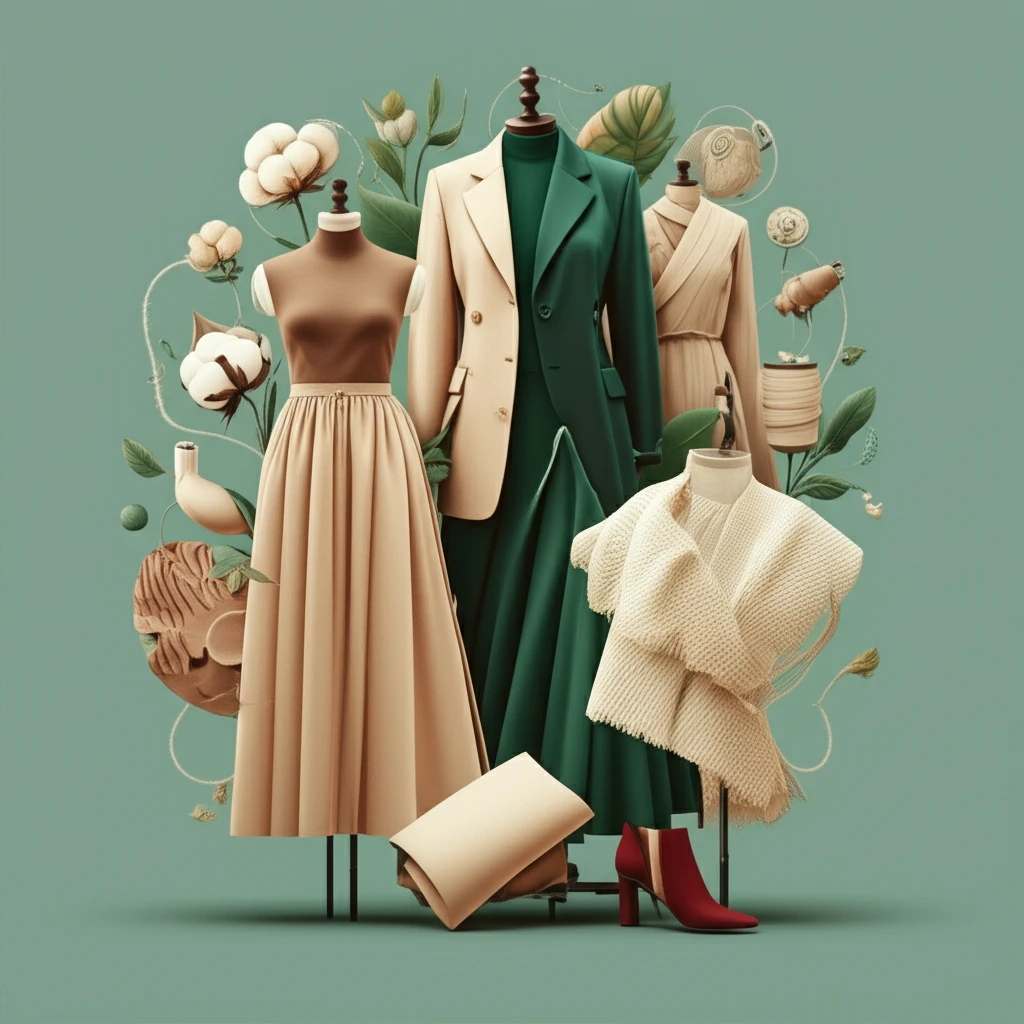Eco-Chic Future: Top 10 Sustainable Fashion Trends to Watch in 2025
Discover the top 10 sustainable fashion trends for 2025, from circular models and bio-based fabrics to digital fashion and fair labor practices. Learn how to embrace eco-chic style.

As the world becomes increasingly aware of environmental and social impact, the fashion industry is undergoing a significant transformation. Sustainable fashion is no longer a niche concept but a growing imperative, driven by conscious consumers and innovative brands. For 2025, we're seeing exciting developments that promise to make our wardrobes more ethical, eco-friendly, and stylish. Let's explore the top 8 sustainable fashion trends set to define the year.
Circular fashion aims to keep resources in use for as long as possible, extracting the maximum value from them whilst in use, then recovering and regenerating products and materials at the end of each service life. In 2025, this means more brands adopting comprehensive take-back programs, repair services, and even rental models for clothing. Think beyond simple recycling; it's about designing products for longevity and their next life. Example: Brands offering buy-back programs for used garments, or subscription services for occasion wear. Tip: Look for brands that clearly outline their circular initiatives and participate in their programs to extend the life of your garments.
Innovation in materials science is booming. 2025 will see an accelerated adoption of bio-based materials like mushroom leather (Mylo), algae-based dyes, citrus silk, and even fabrics derived from agricultural waste. Regenerative agriculture practices, which focus on soil health and biodiversity, will also influence fiber sourcing. These materials offer lower environmental footprints compared to conventional synthetics and resource-intensive natural fibers. Example: Footwear made from mycelium or dresses colored with natural dyes derived from plants. Tip: Pay attention to material labels and research emerging sustainable fabrics. Support brands investing in these pioneering textiles.
The pandemic highlighted the fragility of global supply chains, fueling a move towards localized production. In 2025, we'll see a greater emphasis on manufacturing closer to home, reducing transportation emissions and supporting local economies. This trend goes hand-in-hand with increased transparency, with brands using technology like blockchain to allow consumers to trace their garment's journey from raw material to finished product. Example: A designer producing collections in small batches with local artisans, openly sharing the names of their fabric suppliers. Tip: Seek out brands that are transparent about their manufacturing processes and proud to showcase their local partnerships.
While seemingly futuristic, digital fashion offers a tangible route to sustainability by reducing physical waste. Virtual clothing, augmented reality try-ons, and NFTs (Non-Fungible Tokens) for fashion will gain traction. Digital garments allow for creative expression without material consumption, while NFTs can provide digital ownership, verify authenticity, and even track a physical garment's lifecycle. Example: Influencers wearing virtual outfits for social media posts, or owning an NFT that represents a unique digital collectible version of a physical garment. Tip: Explore digital fashion apps and consider if a virtual outfit can satisfy your desire for a trendy look without the environmental cost.
Upcycling goes beyond mere recycling; it involves transforming discarded items into new products of higher value. In 2025, this trend will evolve with more sophisticated designs and techniques. Designers will increasingly incorporate vintage textiles, deadstock fabrics, and pre-loved garments into entirely new, unique pieces, giving them a second, often more fashionable, life. Example: A denim jacket crafted from multiple pairs of old jeans, or a couture gown made from repurposed hotel linens. Tip: Get creative with your own wardrobe or seek out designers specializing in upcycled collections for truly unique, eco-conscious statements.
Consumers are demanding to know more about where and how their clothes are made. 2025 will see brands adopting even more rigorous transparency measures. This includes sharing details about factory conditions, worker wages, environmental impact data, and the origins of their materials. Technologies like QR codes on garment tags linking to comprehensive supply chain information will become commonplace. Example: A brand's website featuring interactive maps of their factories and detailed reports on their sustainability efforts. Tip: Take advantage of tools and labels that offer transparency. Ask brands questions about their practices if information isn’t readily available.
Fashion is increasingly moving away from rigid gender norms, and this also has sustainability benefits. Gender-neutral designs often prioritize versatility, comfort, and timelessness, making garments appealing to a broader audience and extending their potential lifespan. Similarly, adaptive fashion, designed for people with disabilities, often incorporates features that enhance durability and ease of wear, promoting longevity and inclusivity. Example: Oversized shirts, versatile outerwear, and modular clothing systems that can be styled in multiple ways by anyone. Tip: Invest in versatile, high-quality pieces that transcend fleeting trends and gender boundaries. This fosters a more inclusive and sustainable wardrobe.
Ultimately, the most sustainable garment is the one you already own. 2025 reinforces the "buy less, choose well" mantra. Consumers are encouraged to embrace mindful consumption, investing in high-quality, durable pieces that stand the test of time rather than chasing fast fashion trends. This involves understanding your personal style, building a capsule wardrobe, and caring for your clothes to maximize their wear. Example: Opting for a beautifully made, classic trench coat that will last a decade over several trendy, low-cost jackets. Tip: Before making a purchase, ask yourself if you truly need it, if it will integrate well with your existing wardrobe, and if you're prepared to care for it properly.
The future of fashion is undeniably sustainable. By embracing these 8 key trends, from circular models and innovative materials to mindful consumption and transparent practices, both brands and consumers can contribute to a more ethical and environmentally responsible industry. Making conscious choices about what we wear and how we consume fashion is not just a trend; it's a commitment to a better planet and a more equitable future. Let's step into 2025 with style and sustainability hand-in-hand.